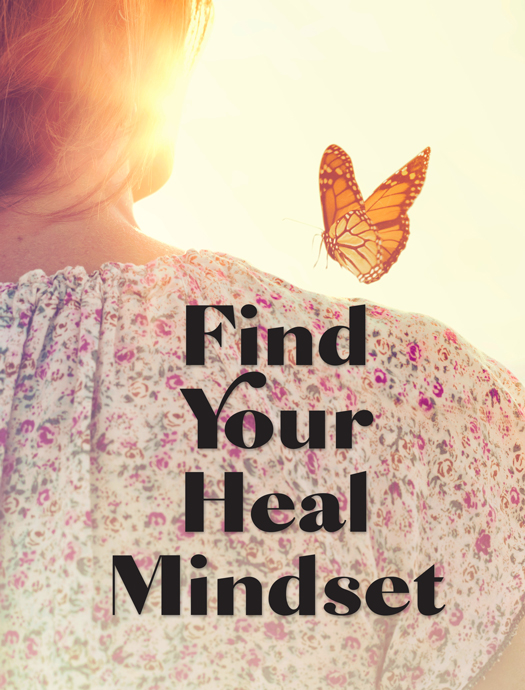By Sonia Sharma
“We delight in the beauty of the butterfly, but rarely admit the changes it has gone through to achieve that beauty.”—Maya Angelou
Going through changes in a being like a butterfly is automatic, but, as humans, we have the free will to either choose to mentally transform or stay in the confines of the cocoon around our trauma, betrayal, injustice or hurt.
Hurt Mindset
I call the cocoon of our hurt the “hurt mindset.” In this mindset, our life, mind, and emotions are encircled by the trauma, betrayal, injustice or hurt we experienced. Our thinking is limited and guided by the hurt, and we continue to focus on all that went wrong. This is not to diminish the trauma, betrayal, injustice or hurt in any way—our hurt has its rightful place, and we should acknowledge and articulate our hurt.
However, after a certain point, only one of the two will be dominant—either our static identity now limited by the hurt, or our new dynamic identity consciously redefined after the hurt.
Heal Mindset
I call the positive mental transformation in response to a trauma, betrayal, injustice or hurt the “heal mindset.” In the heal mindset, we are focused on our healing beyond what went wrong or with whom the blame lies. We decide to advance ourselves past the hurts, traumas, betrayals and are committed to elevating our well-being and enhancing the quality of our life.
Role of Heal Mindset in Self-healing
It is important to understand that “the hurt” has been our reaction to a wrongdoing by the other person. The reaction may be justified, but it is not helping us thrive in our life the way we would like to thrive. So, we can now choose how we respond to the current situation.
Each of us has the ability to transform our reaction of hurt into a response of self-healing. Creating and maintaining a heal mindset can help provide the resilience and grace to build a better life for ourselves. It gets us unstuck from the comfort zone of replaying the hurt repeatedly in our minds and feeling justified. Rather than unintentionally using the hurt as a weapon that continues to grow hurt, we can transform it into a resource that heals.
Action Steps: Ways to Develop a Heal Mindset
- Intercept & replace:
“Be mindful of your self-talk. It is a conversation with the universe.” –Angie Karan
As part of the self-talk we have, we may keep hovering over and around the hurtful experience. It may take many forms, such as continuing to constantly talk about the experience, reliving the hurt, feeling sorry for yourself, or criticizing/blaming yourself or others. It is integral to intercept this inner hurt or victim dialog and replace it instead with a healing choice. For example, is there a way to redefine an aspect of the experience that empowers you? Can this narration of the hurt be a way to advocate for yourself?
- Start pivoting toward healing:
Developing a heal mindset takes gentle practice and consistency. We must be persistent in persuading our mind to take slight turns away from the hurt and pivot toward our healing and recovery. The turns away from the hurt and pivots toward healing can be either big or small. As long as the effort is made, it counts toward recovery and well-being. In addition, we have to be on a healing diet of understanding, support, kindness, compassion, and inspiration to action. This will start liberating us from the hurt mindset and empower us through the heal mindset.
- Reframe the hurtful experience:
A crucial step to developing a heal mindset is to reframe the hurtful experience at its crux. Your soul is on a journey specific to you. You passed this experience, and your soul received the understandings necessary to move successfully in your journey. It is important to suspend negativity and judgement around this experience for you, even if, at first, it is done temporarily, and impartially examine the learnings you have received for your unique path in life. Reframing the hurtful experience in this way allows us to reclaim our life and continued well-being.
Meditation
It is time for me to stand in my space and own ALL of my life. I take ownership of all my successes and learnings. I am authentic. I value and deeply engage with my journey of purpose. I am emotionally intelligent. I receive support in areas in which I am vulnerable and help others where I am strengthened.
I believe in the possibilities for my desires, for what I want to create in this life. Toward that end, I have a heal mindset in which I break down my personal barriers and collaborate with my potential.
I live my best life. Thank you.
Space for Reflection
Now give yourself time to contemplate on these questions:
- Is there a way to redefine an aspect of your life experience that empowers you?
- In what way have you become wiser through your experiences?
- How can you better use your strengths? How did you develop your current strengths? Can you use similar strategies to strengthen areas in which you might need support?
- What do you need to self-heal so you are living up to your potential?
- What does a heal mindset look like for you?
Sonia Sharma is a speaker and author in the personal development industry. Her work centers on self-healing and living one’s best life. She has also served as a university lecturer for the last 15 years at various prestigious institutions such as Stanford, Columbia University and UC Berkeley. She has been interviewed on radio and television shows, participated and presented at international conferences and published articles and books. She can be reached at sonia108lotus@gmail.com.





